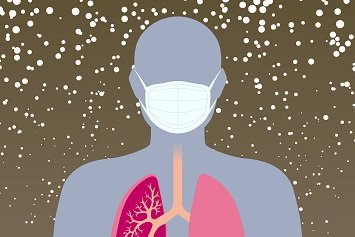These are highly efficient filters, the main purpose of which is to remove fine particles from the air, including PM2.5 and PM10 (with a diameter of less than 2.5 and 10 microns, respectively). HEPA is not a brand or a brand, but a class of filters, which is defined by international and national standards EN 1822-1: 2009 and GOST R EN 1822-1-2010.
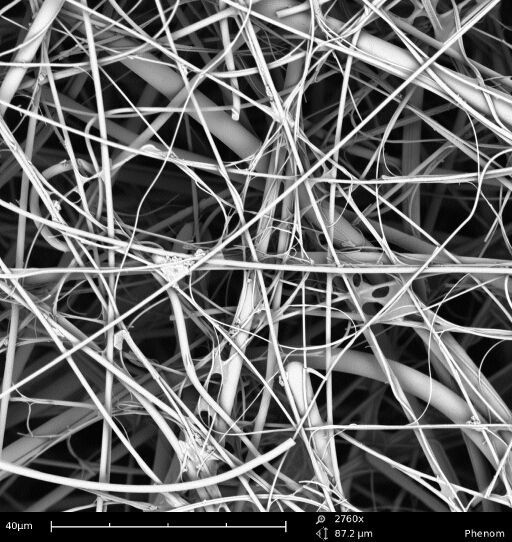
Let's take a look at the HEPA filter "at arm's length", tell us about its principle of operation and the main effects due to which particles are deposited on the filter.
The basis of any HEPA filter is randomly located fibers of different thickness, approximately 0.5-5 microns. The distance between the fibers is about 5-50 microns. The diameter of fine particles is within a few microns or even a few fractions of a micron. The question arises: how does a filter with such large pores retain such small particles?
We usually think of a filter as a fishing net or a net: if the filtered object is larger than the mesh, it gets stuck. This mechanism is called the straining effect. It works for particles larger than the pore size of the filter. On a simplified model, the sieve effect looks like this:
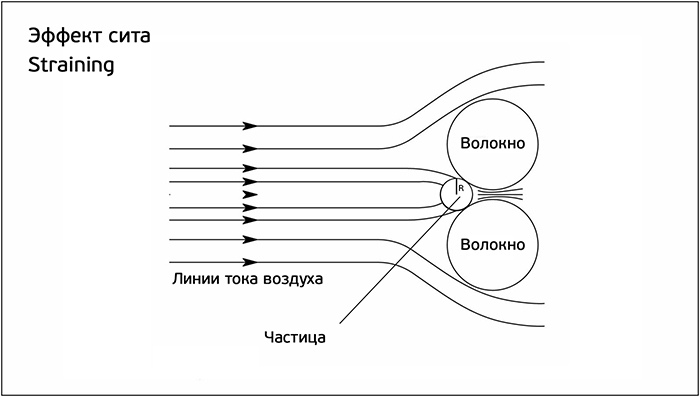
Filter fibers are presented as cylinders located across the airflow. The flow itself is considered to be irrotational. The particle model is a ball with radius R. If 2R is greater than the distance between the fibers, the particle gets stuck in the filter. The larger the particle, the more likely it is to get stuck in the fibers. Therefore, for large particles, the sieve effect works better:

There is no reference to specific sizes on the graph, since filters with different fiber thicknesses and packing densities will retain different particle fractions. The shape of the curve will be approximately the same, but it can “float” on a horizontal scale. For example, for a coarse filter of class G, the curve will be located to the right than for a fine filter of class F. In HEPA filters, the sieve effect is also observed. And if HEPA worked only by this mechanism, then its efficiency curve would look about the same. However, in reality, it looks completely different:
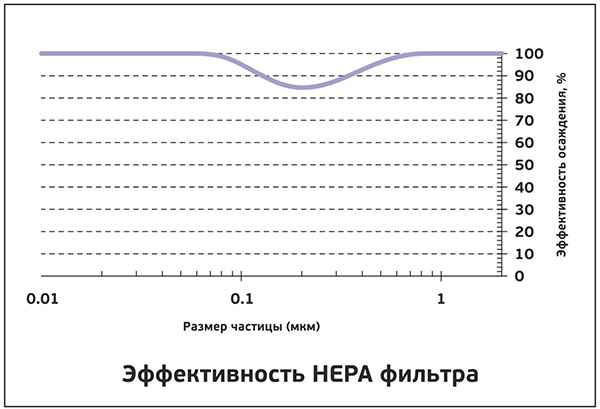
The graph shows that the HEPA filter traps particles of any size. And if the effective filtration of large particles (about 5 microns and more) occurs by the sieve mechanism, then the filtration of fine fractions (about 1-0.01 microns) has a different nature.
How does a HEPA filter “catch” fine dust?
The main difference between HEPA and coarse and fine filters is that the particle does not have to get stuck in the fibers to filter. If a speck of dust just touches the filter material, this is already enough for effective deposition. This is due to two processes: adhesion and autohesion.
Adhesion is the interaction of dust with a deposition surface, in our case with HEPA fibers. Thanks to adhesion, the first layer of dust appear on clean fibers.
Autohesion, or stickiness, is the interaction of dust particles with each other. Due to autogenous interaction, the particles continue to lay on top of each other, forming multilayer conglomerates on the fibers. They look like this:
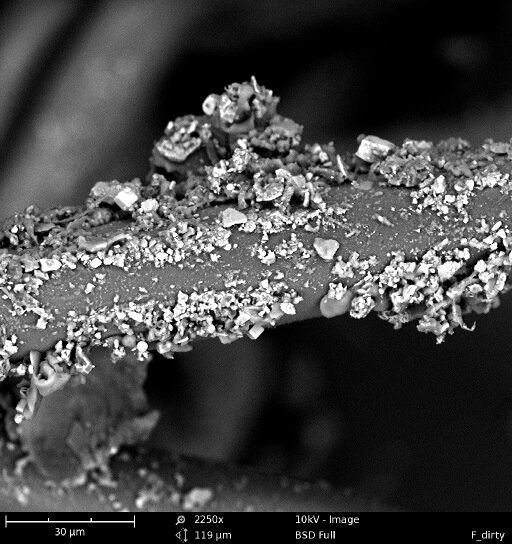
The nature of adhesion and autohesion is in the molecular interaction of particles with each other and with fibers (van der Waals forces). These forces appear at a distance from one to several hundred particle diameters. For the smallest particles, the attraction to the fiber and the dust layer is so great that the particles are deposited in the HEPA filter virtually forever. The figures confirm this: for particles less than 10 microns, the tensile strength of the dust layer is more than 600 Pa.
So, due to the forces of attraction, the particle almost tightly adheres to the fiber of the HEPA filter, as soon as you touch its surface. This explains the retention of particles on the filter, but there is still no answer to the question:
How do the smallest particles touch the fiber of the HEPA filter?
As we found out, the sieve effect has nothing to do with it - the smallest particles freely fly through the pores. Other mechanisms operate in HEPA filters.
Any particle is held in the airflow, and if no forces arise in the filter that deflects the particle from the airflow line towards the fiber, then there will be no deposition. As a result, the particle will slip through the filter together with the flow. Therefore, the question "How do particles touch the fiber?" can be paraphrased: "How do particles come out of the airstream?" And the answer to it will be different, depending on the size and mass of the particle.
The smallest particles (with a diameter of fewer than 0.1 microns) have a small mass and are constantly in a chaotic Brownian motion. Their trajectory constantly fluctuates relative to the air streamline. In the course of vibrations, the particle leaves the stream, touches the fiber, and settles. This is the diffusion effect :
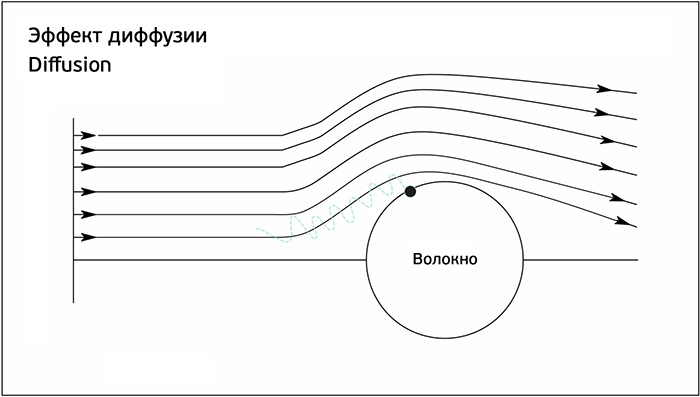
Larger particles (with a diameter greater than 0.3 microns) weigh more, so their oscillations relative to the streamline are less or absent altogether. Such particles are deposited by a different mechanism. The model shows that the air flow lines are curved near the fiber, bending around the obstacle. Large and heavy particles, due to inertia, leave the air stream, collide with the fiber, and settle. This is the effect of inertia :
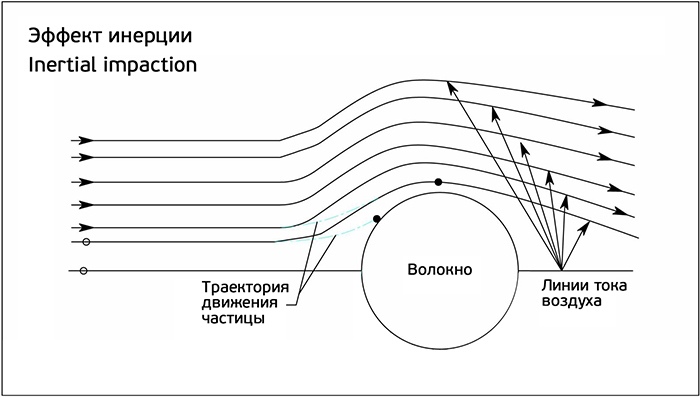
Diffusion and inertial effects complement each other: one is responsible for filtering out the smallest particles, the other - for larger ones:
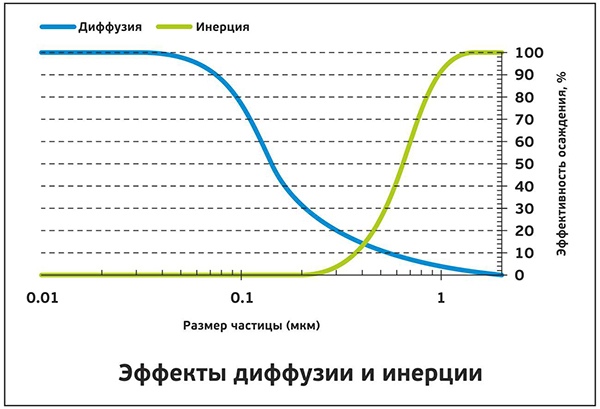
The most difficult thing is to plant particles with an "intermediate" size on the fiber. Their inertia is still not large enough, and diffusion is already working weakly since the oscillations of their trajectory relative to the streamline are no longer so strong. Therefore, these particles are more likely to remain in the flow and bend around the fibers with the air. They are called the Most Penetrating Particle Size (MPPS). And for their deposition, the last mechanism is of greatest importance - the engagement effect :

The entanglement effect works when a particle has approached the surface of the fiber at a distance of its radius. This touch is enough for it to settle. This mechanism works for more than just MPPS. It is versatile and works for all particle sizes. Dust particles can remain in the air stream, perform diffusional oscillations relative to the streamline, or fly out of the stream due to inertia - in any case, if the particle touches the fiber, it settles.
The effectiveness of this mechanism depends on the particle size. The larger the particle, the more likely it will touch the fiber. In this, the mesh effect is similar to the sieve effect, therefore the graph is almost the same (of course, with a binding in a different range of particles):
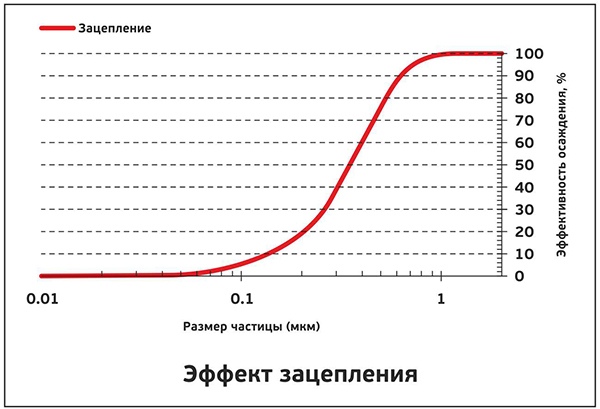
In fact, in a HEPA filter, all mechanisms act simultaneously on a particle, so the total efficiency of a HEPA filter is equal to the sum of the contributions of each effect:
ηtotal = ηsita + ηlinking + ηinertia + ηdiffusion
Continuous exposure of HEPA to a coarse aerosol will significantly reduce filter life. This is due to the sieve effect: large particles quickly clog the filter and reduce its permeability. To avoid the sieve effect, one or more prefilters of a lower class G and / or F are installed in front of the HEPA filter. They protect the HEPA from premature clogging. If the prefilters are installed, then HEPA works strictly "in the specialty" - filtration of fine particles. Thus, three effects remain:
ηtotal = ηlinking + ηinertia + ηdiffusion
If we add up all three graphs of efficiency for each mechanism, we get the same curve of the overall efficiency of the HEPA filter, which we showed at the beginning of the article:
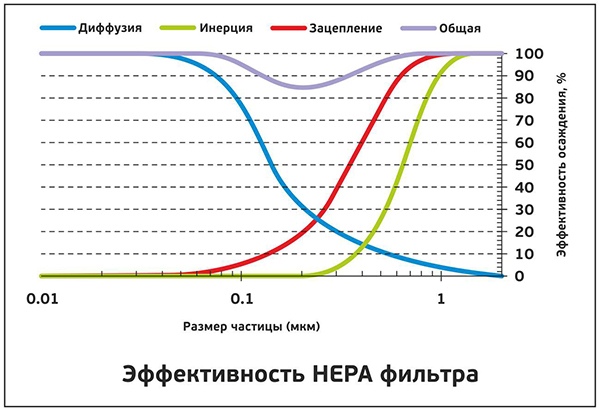
As you can see in the MPPS range (from about 0.1 to 0.3 microns), the overall efficiency of the HEPA filter "falls into the pit". And it is by MPPS that overall efficiency is measured. HEPA filter class H10 (according to the new nomenclature E10) works with an efficiency of more than 85%, and a filter of class H11 (E11) - more than 95%. This means that 95 out of 100 MPPS particles are deposited in the E11 HEPA filter. In this case, the rest of the particles are deposited with a probability of almost 100%, but the final efficiency is usually indicated by MPPS, 95%.
What determines the effectiveness of a HEPA filter?
The effectiveness of HEPA depends not only on the size of the filtered particles but also on the parameters of the filter itself:
- The diameter of the fibers in the HEPA filter
- Fiber packing density
- Fiber material
The thinner the fibers and the denser they are packed, the larger the area of their contact with the particles. And the better the fibers "catch", the more effective the deposition. If the material from which the filter is made has high conductivity, then the fibers can be charged in the air stream. In this case, electrostatic attraction forces (Coulomb forces) arise between the fibers and the particles. They further increase the efficiency of the HEPA filter. We will not consider this effect in more detail here; we will talk about an electrostatic deposition in another article.
When particles settle, the distance between the fibers decreases:
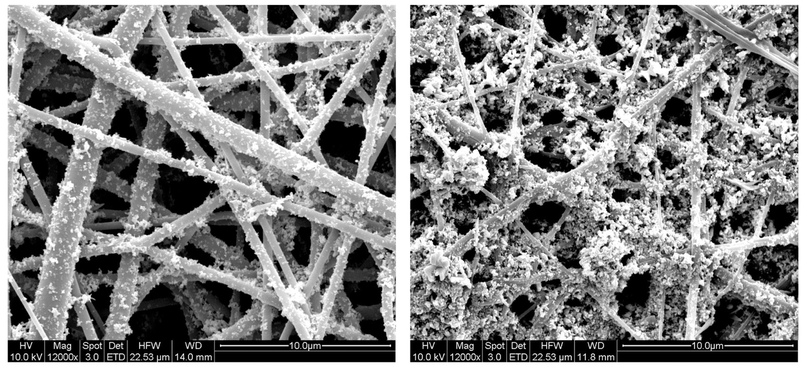
As a result, the area of the fibers increases, and a paradoxical fact is connected with this: over time, the effectiveness of HEPA does not decrease, but increases. On the other hand, with contamination, the filter's permeability decreases its resistance increases, the pressure drop across the filter increases, and, as a result, the performance of the device in which it is installed decreases. If the filter is completely clogged and the performance of the device has dropped to almost zero, the only option is to replace the filter. The replacement frequency depends on the filter capacity. This figure determines how much dust HEPA can deposit before the pressure drop across it becomes critical.
Now that we have an idea of the HEPA filter, let's summarize the principle of its operation:
- An airflow with dust grains of different sizes, from 10 microns and less, enters the filter
- Large particles leave the air stream due to the inertia effect, small particles due to the diffusion effect
- All particles that leave the stream and touch the fiber are deposited on the filter
- The particles are firmly adhered to the fiber due to the forces of attraction (van der Waals)
We will also collect in one place all the non-obvious facts about the HEPA filter:
- The HEPA filter can trap particles of all sizes
- The dust stays in the HEPA filter almost forever. Vacuuming HEPA is useless - just change it.
- Over time, the effectiveness of the HEPA filter only increases.
That's all for now: we talked about the principles of deposition and retention of fine dust in HEPA filters.



